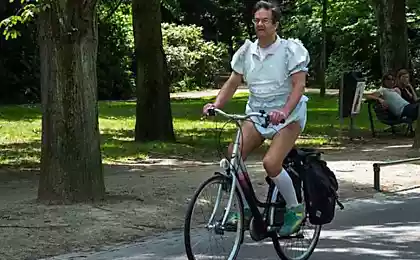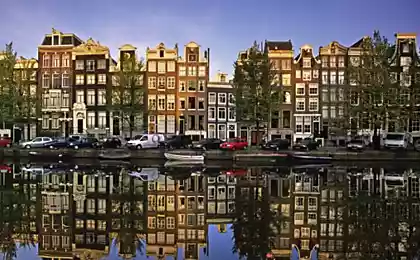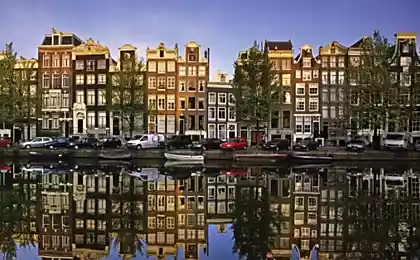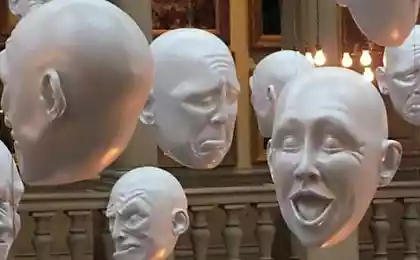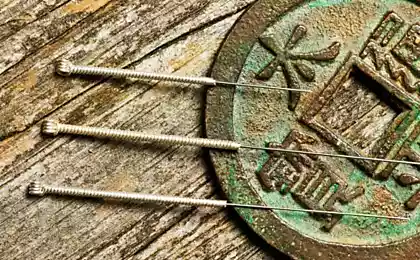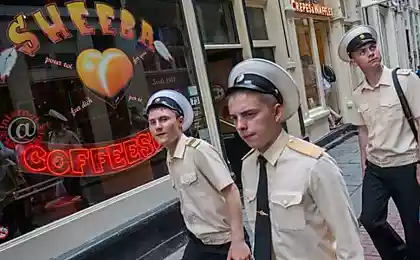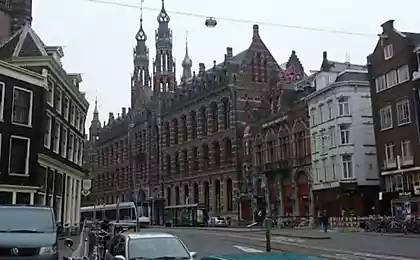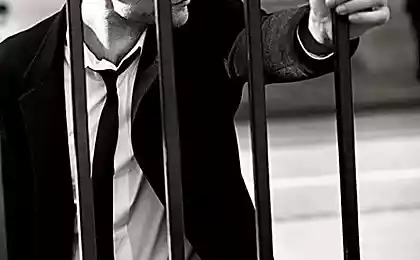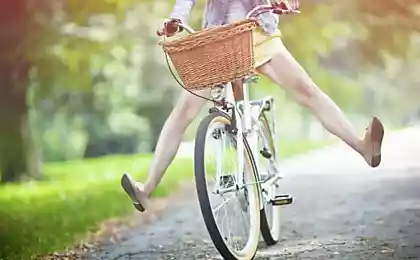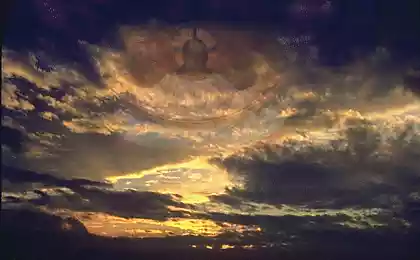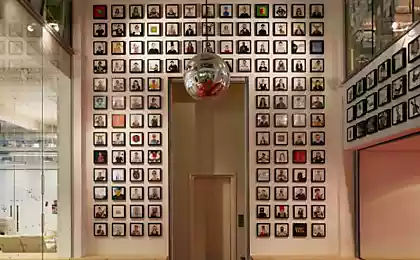687
What a joy this your Amsterdam!
From nasty Holland move to the emotions, with the signs "plus»)))
25 photos via Ilya Varlamov
1. The greatest joy is in Amsterdam flowers. In the Netherlands, the first copies of tulips came in 1570 when, at the invitation came Eklyuz work Gollandiiyu and together with other plants seized tulip bulbs. This was the beginning of infatuation tulips whole nation, known as tulip mania. Many industrialists are throwing their production and took up cultivation of tulips. As a result, there were crashes, dying state, and the government was forced to take action against this mania. And society has given rise to excessive fascination reaction; were a person can not tolerate indifference species tulips and destroy them ruthlessly. Permanently discontinue this mania, when they began to spread the English gardens and various fresh flowers.
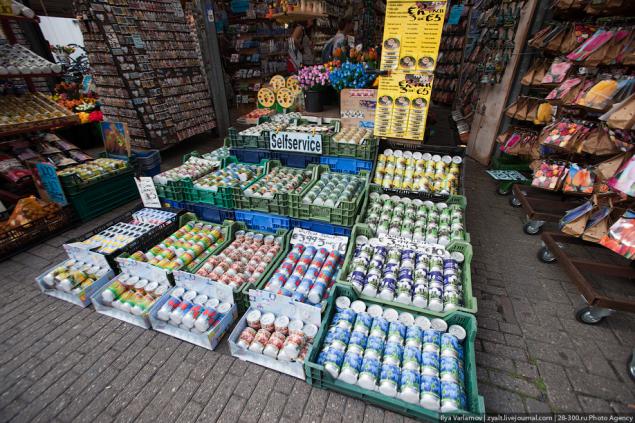
2. One of the main attractions of Amsterdam - the flower market, the only floating market in the world. Flowers on the site sold to the XVII century, when traders sell flowers on the boats, floating along the city streets. Shops are located on barges along the waterfront. Until the 1960s, the market is almost sold cut flowers. The market operates mainly as a tourist attraction. You can see the local and exotic flowers and plants, or buy a souvenir. It is best represented tulips. Bulbs are sold in bulk and packages, an average of 3-5 euro per dozen.
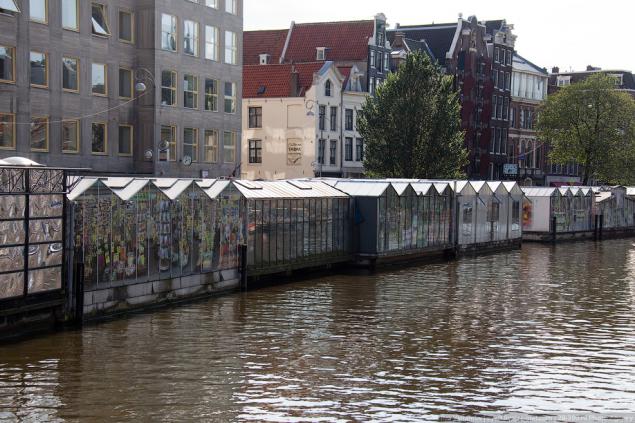
3. In the last months of World War II, the Nazis made a blockade of water to the west of the Netherlands, cutting off all supplies of food. The consequences were disastrous. According to witnesses, during the "hunger winter" of 1944-1945, the malnutrition deaths of at least 10,000 civilians. Typically, a person consumes about 1 600-2 800 calories a day. But in April 1945, some residents of Amsterdam, Delft, The Hague, Leiden, Rotterdam and Utrecht had to be content with only 500-600 calories. People ate tulips. Tulip bulbs themselves are very hard, as they do not boil. Also bulbs cause irritation of the mouth and throat. To reduce irritation to the bulbs added if it was a little carrots or sugar beets. 100 grams of tulip bulbs - about 148 calories - contained 3 grams protein, 0, 2 grams of fat and 32 grams of carbohydrate. So not very delicious tulip bulbs saved many Dutch people from starvation.
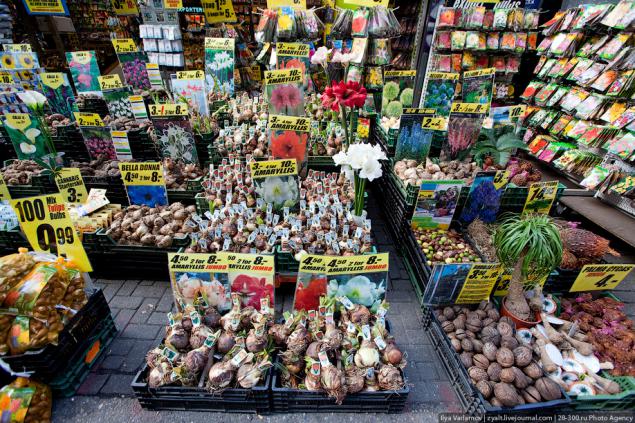
4. Pay attention to the colors.
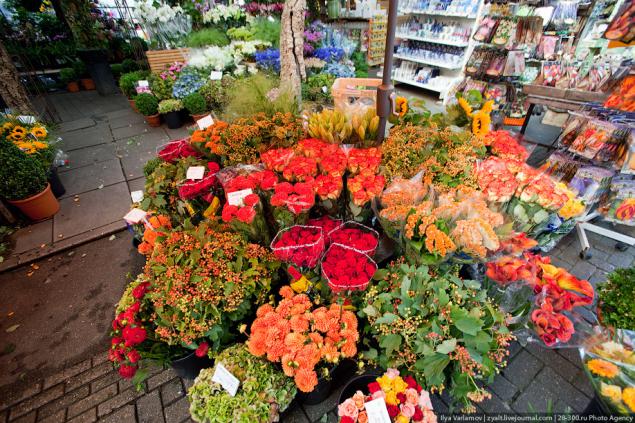
5. The paradox, then you can buy excellent fresh flowers, but you can not buy ugly cellophane involucels with zolotishkom and monograms. When I was in Moscow asking me flowers wrapped in paper, they look at me like an idiot, and offer their gypsy painted cellophane.
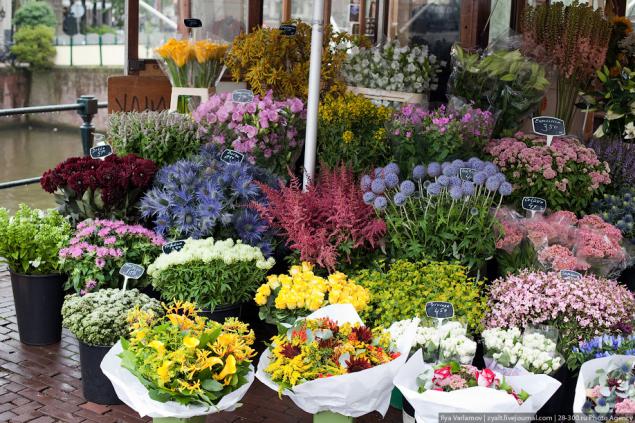
6. In Russia, there are 2 kinds of flowers: roses, expensive protocol chrysanthemum, carnation, lily, and the rest are very expensive, which can only be bought in special "Flower Boutique". Even seasonal peonies, gladioli, etc. You can buy just the grandmothers in the metro.
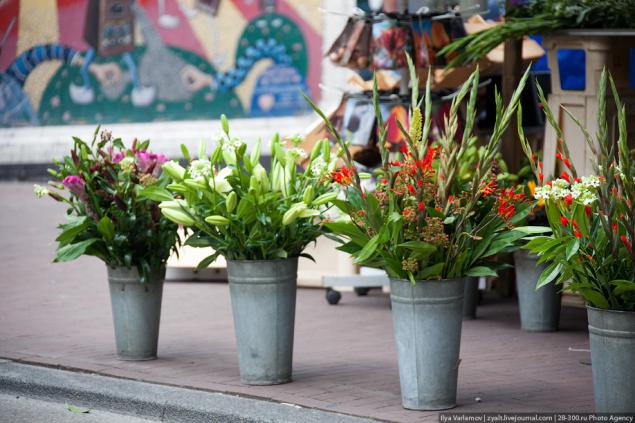
7. Interestingly, the time will come when Moscow will sell anything other than roses?
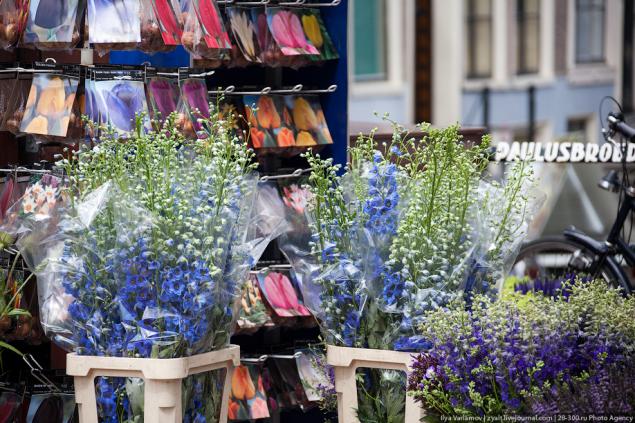
8. About the price did not even dream of in Moscow rose less $ 100 is almost impossible to find, collect a bunch cheaper in 1000 too.
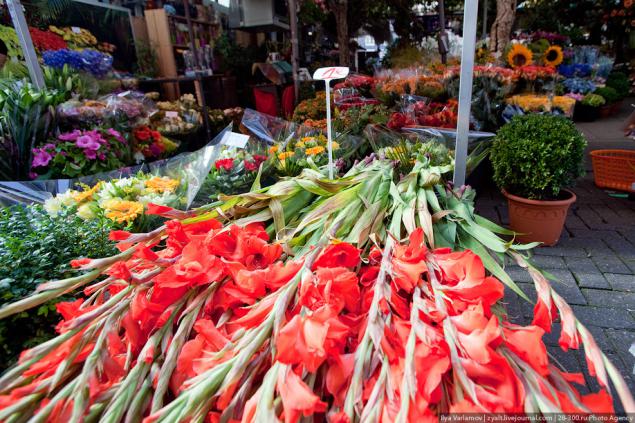
9. Flowers wrapped in paper and not tie up with gold ribbon monogram!
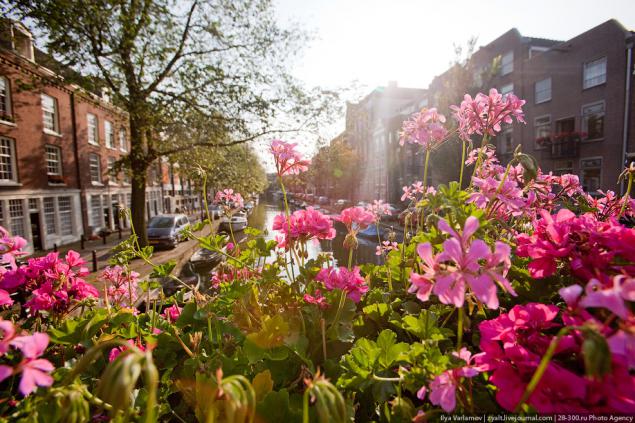
They are everywhere, and it looks very natural.
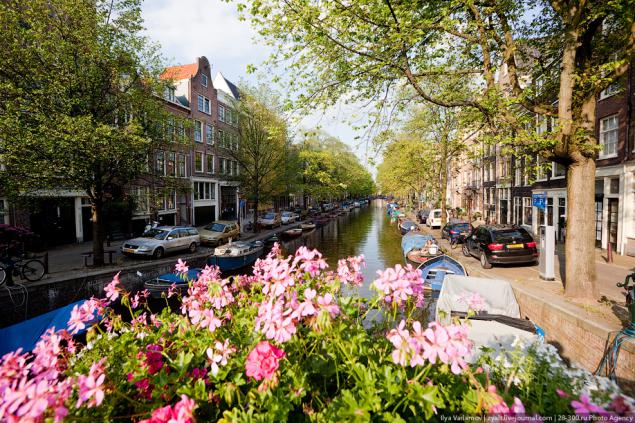
And yes, there is the beautiful flower beds, as in Moscow, where for klubmoy colors to be seen.
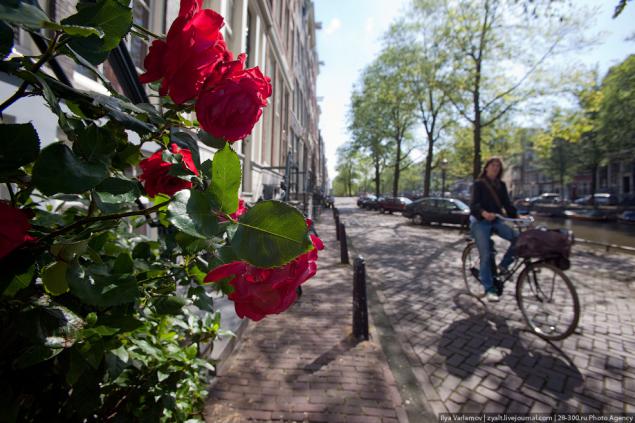
12
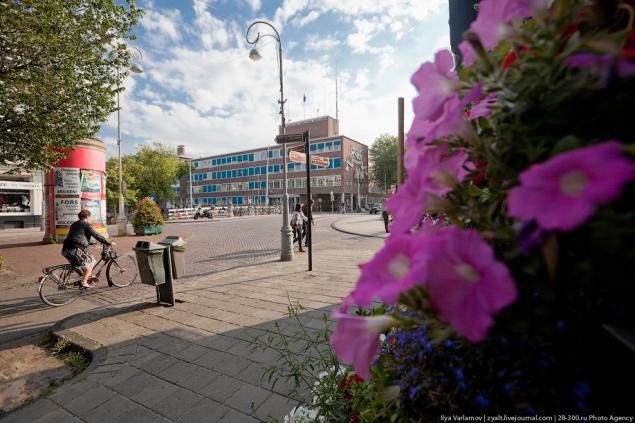
The second is the joy of cheese. The Netherlands took the 4th place in Europe for the production of cheese, that in comparison with the area of the country a lot. Fashion for cheese from Holland came to Russia thanks to Peter I: get to know their taste in town Saardam where he studied shipbuilding, the king ordered permanently in the country to buy his favorite product. Plastic, with vivid, memorable taste of Dutch cheese with time became a real gastronomic classics.

Assortment of many cheese shops envy Moscow shops, despite the fact that the cheese is quite inexpensive. The spice trade, which was the monopoly of the Netherlands in the XVII-XVIII centuries, the country not only brought considerable profit, but also marked the beginning of a new trend in cheese making: to preserve his two classic varieties - Gouda and Edam, the Dutch began to experiment. They were the first to be added to the cheese curd chervil, cumin, star anise and other spices, to this day they continue to amaze the world of new flavors.
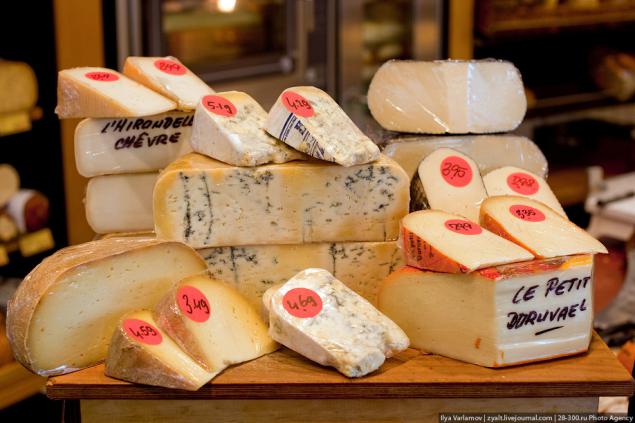
There are separate cheese boutiques where you can buy cheese souvenir.
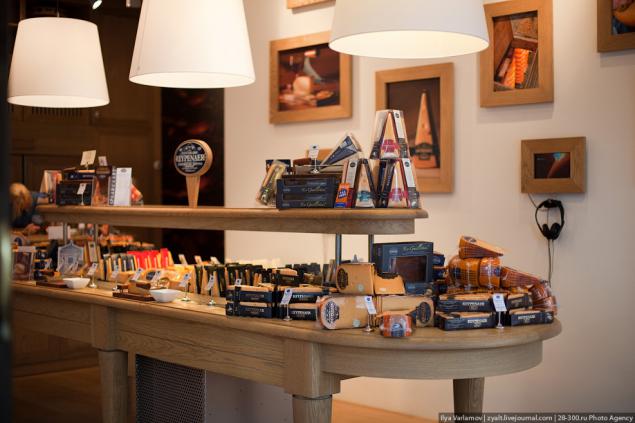
Bread and bakery, delicious fresh bread and rolls, yum-yum.
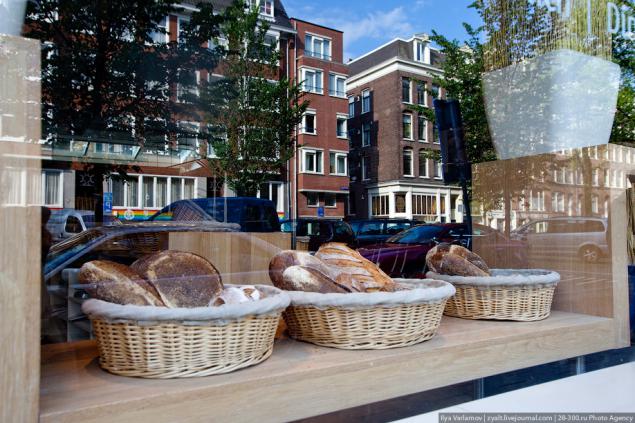
We proceed to the cave painting and drawing.
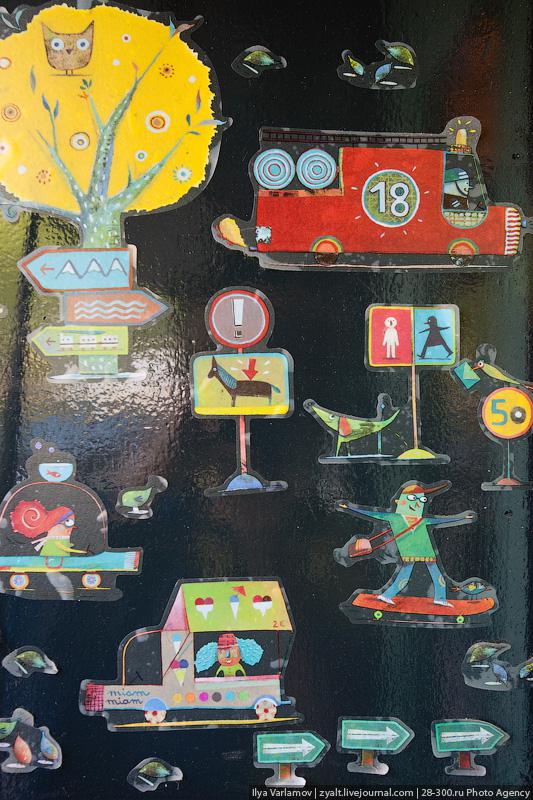
Despite the fact that graffiti occupied almost all of the free wall, it looks all very naturally and beautifully.
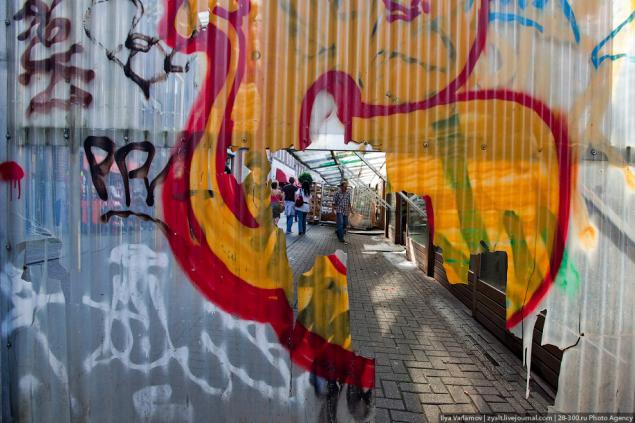
The narrow passageways between the houses are just more fun.
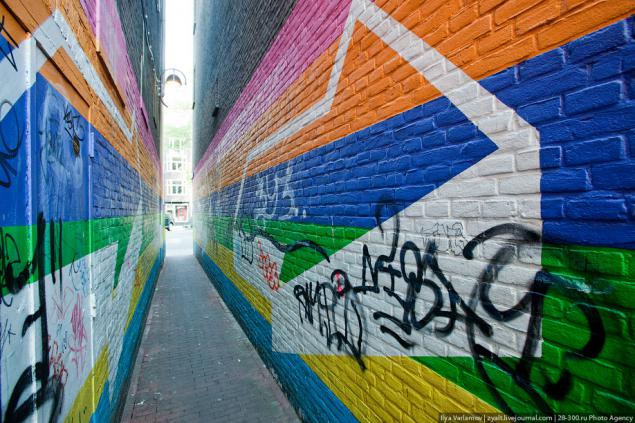
Sometimes fun getting the whole house.
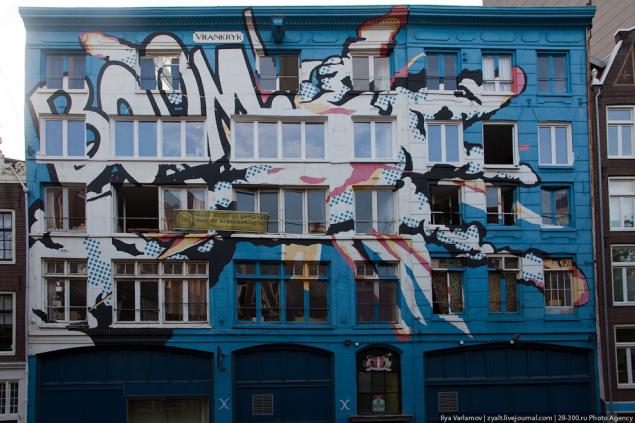
For the most part it refers to the evicted houses, which takes young people.
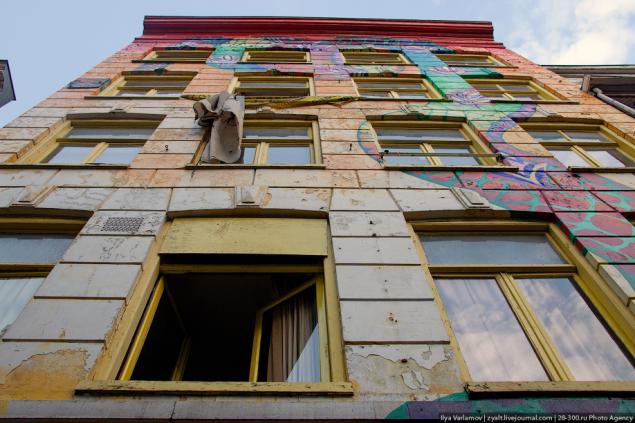
Joyful Cat.
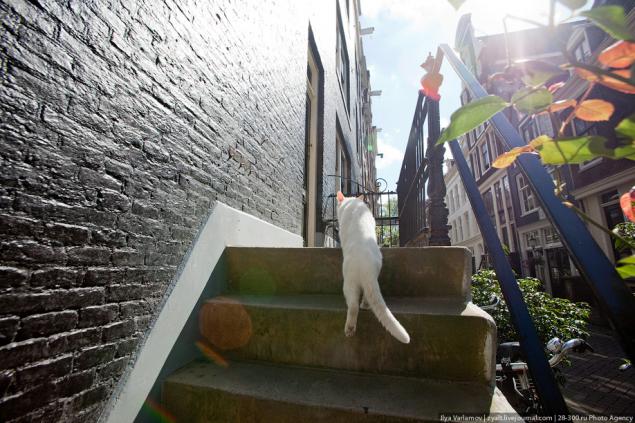
Funny umbrellas.
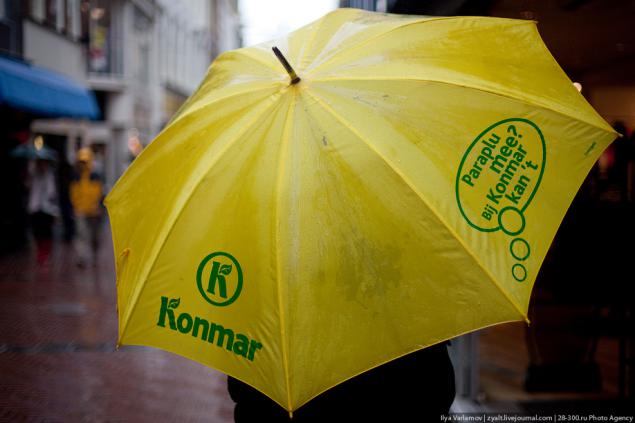
What kind of friendly and happy people!
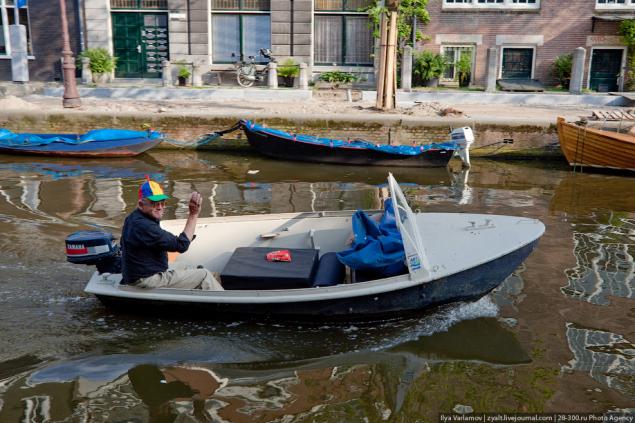
Suddenly, an angry seagull!
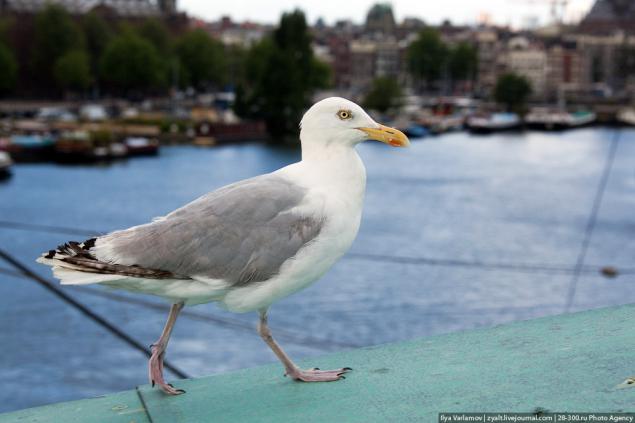
Source:
25 photos via Ilya Varlamov
1. The greatest joy is in Amsterdam flowers. In the Netherlands, the first copies of tulips came in 1570 when, at the invitation came Eklyuz work Gollandiiyu and together with other plants seized tulip bulbs. This was the beginning of infatuation tulips whole nation, known as tulip mania. Many industrialists are throwing their production and took up cultivation of tulips. As a result, there were crashes, dying state, and the government was forced to take action against this mania. And society has given rise to excessive fascination reaction; were a person can not tolerate indifference species tulips and destroy them ruthlessly. Permanently discontinue this mania, when they began to spread the English gardens and various fresh flowers.

2. One of the main attractions of Amsterdam - the flower market, the only floating market in the world. Flowers on the site sold to the XVII century, when traders sell flowers on the boats, floating along the city streets. Shops are located on barges along the waterfront. Until the 1960s, the market is almost sold cut flowers. The market operates mainly as a tourist attraction. You can see the local and exotic flowers and plants, or buy a souvenir. It is best represented tulips. Bulbs are sold in bulk and packages, an average of 3-5 euro per dozen.

3. In the last months of World War II, the Nazis made a blockade of water to the west of the Netherlands, cutting off all supplies of food. The consequences were disastrous. According to witnesses, during the "hunger winter" of 1944-1945, the malnutrition deaths of at least 10,000 civilians. Typically, a person consumes about 1 600-2 800 calories a day. But in April 1945, some residents of Amsterdam, Delft, The Hague, Leiden, Rotterdam and Utrecht had to be content with only 500-600 calories. People ate tulips. Tulip bulbs themselves are very hard, as they do not boil. Also bulbs cause irritation of the mouth and throat. To reduce irritation to the bulbs added if it was a little carrots or sugar beets. 100 grams of tulip bulbs - about 148 calories - contained 3 grams protein, 0, 2 grams of fat and 32 grams of carbohydrate. So not very delicious tulip bulbs saved many Dutch people from starvation.

4. Pay attention to the colors.

5. The paradox, then you can buy excellent fresh flowers, but you can not buy ugly cellophane involucels with zolotishkom and monograms. When I was in Moscow asking me flowers wrapped in paper, they look at me like an idiot, and offer their gypsy painted cellophane.

6. In Russia, there are 2 kinds of flowers: roses, expensive protocol chrysanthemum, carnation, lily, and the rest are very expensive, which can only be bought in special "Flower Boutique". Even seasonal peonies, gladioli, etc. You can buy just the grandmothers in the metro.

7. Interestingly, the time will come when Moscow will sell anything other than roses?

8. About the price did not even dream of in Moscow rose less $ 100 is almost impossible to find, collect a bunch cheaper in 1000 too.

9. Flowers wrapped in paper and not tie up with gold ribbon monogram!

They are everywhere, and it looks very natural.

And yes, there is the beautiful flower beds, as in Moscow, where for klubmoy colors to be seen.

12

The second is the joy of cheese. The Netherlands took the 4th place in Europe for the production of cheese, that in comparison with the area of the country a lot. Fashion for cheese from Holland came to Russia thanks to Peter I: get to know their taste in town Saardam where he studied shipbuilding, the king ordered permanently in the country to buy his favorite product. Plastic, with vivid, memorable taste of Dutch cheese with time became a real gastronomic classics.

Assortment of many cheese shops envy Moscow shops, despite the fact that the cheese is quite inexpensive. The spice trade, which was the monopoly of the Netherlands in the XVII-XVIII centuries, the country not only brought considerable profit, but also marked the beginning of a new trend in cheese making: to preserve his two classic varieties - Gouda and Edam, the Dutch began to experiment. They were the first to be added to the cheese curd chervil, cumin, star anise and other spices, to this day they continue to amaze the world of new flavors.

There are separate cheese boutiques where you can buy cheese souvenir.

Bread and bakery, delicious fresh bread and rolls, yum-yum.

We proceed to the cave painting and drawing.

Despite the fact that graffiti occupied almost all of the free wall, it looks all very naturally and beautifully.

The narrow passageways between the houses are just more fun.

Sometimes fun getting the whole house.

For the most part it refers to the evicted houses, which takes young people.

Joyful Cat.

Funny umbrellas.

What kind of friendly and happy people!

Suddenly, an angry seagull!

Source:

